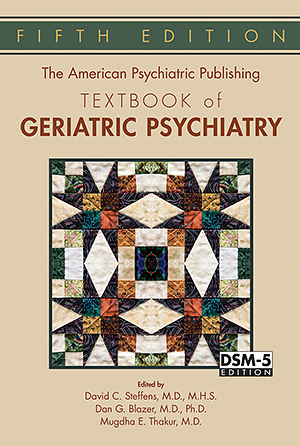Chapter 7.Delirium
Sections
Excerpt
Delirium, defined as an acute and sudden change in attention and overall cognitive function, is a serious medical problem for older persons—and one that is often fatal (Inouye et al. 2014b). Delirium is the most frequent complication affecting hospitalized patients ages 65 years and older. Despite its high prevalence and incidence, it often goes unrecognized. Hospitalized patients with delirium have a worse prognosis than patients without delirium and are at an increased risk of developing long-term cognitive and functional decline (Pandharipande et al. 2013; Rudolph et al. 2009; Saczynski et al. 2012), which leads to additional posthospitalization treatment costs, including institutionalization, rehabilitation services, and home health care (Inouye et al. 2014b). Because it is preventable in up to 40% of cases (Inouye et al. 1999; Marcantonio et al. 2001), delirium is increasingly the target for interventions to prevent its associated burden of downstream complications and costs and therefore is now included on the patient safety agenda (Wachter 2012) and as an indicator of health care quality for older patients (National Quality Measures 2003). Delirium is a costly condition, with total annual health care costs related to delirium and its complications estimated at over $164 billion (Leslie et al. 2008).
Access content
To read the fulltext, please use one of the options below to sign in or purchase access.- Personal login
- Institutional Login
- Sign in via OpenAthens
- Register for access
-
Please login/register if you wish to pair your device and check access availability.
Not a subscriber?
PsychiatryOnline subscription options offer access to the DSM-5 library, books, journals, CME, and patient resources. This all-in-one virtual library provides psychiatrists and mental health professionals with key resources for diagnosis, treatment, research, and professional development.
Need more help? PsychiatryOnline Customer Service may be reached by emailing [email protected] or by calling 800-368-5777 (in the U.S.) or 703-907-7322 (outside the U.S.).



